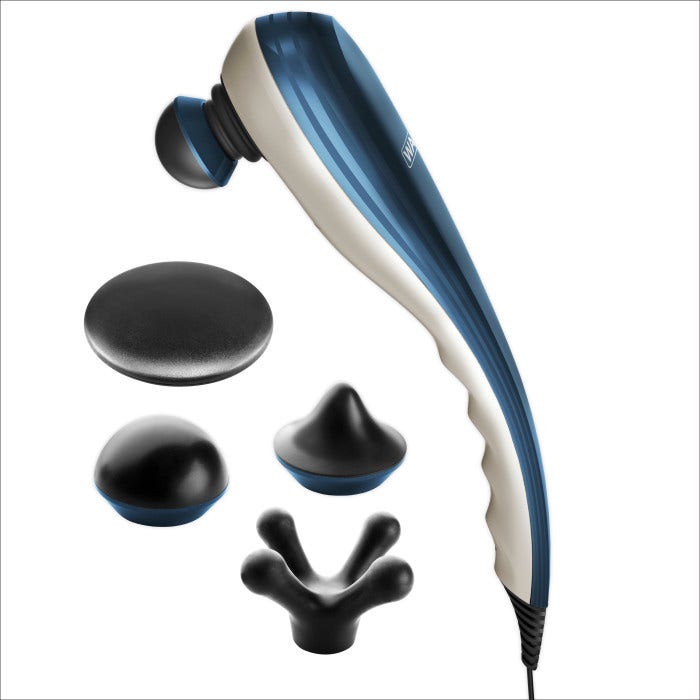Pain is an epidemic that’s sweeping the nation. Based on a nationwide online study conducted by Harris Interactive — 85 percent of Americans are hurting. Chances are you’re among this vast majority struggling with muscle and joint pain, and this means you’re also among the many searching for pain relief. Fortunately, there are many resources available to help manage pain, but the first step is understanding the issue.
Where it hurts
Of the men and women reporting pain, 75 percent have it in three or more places, with the most common pain points being lower back, shoulders/neck and joints. Even more distressing, the highest percentage of this group is facing pain on a daily basis.
Who’s in pain
In the battle of the sexes, women win the pain game. They experience more pain than men, but by a slim margin, 87 percent to 84 percent. And while marriage might be bliss, it can come at a painful price. Those who tie the knot experience about 10 percent more pain than single/never married people. And the notion that children can be a pain in the neck does not actually ring true, as those with kids are just as likely to have pain as those without.
Not surprisingly, pain favors those who are older, however, the margin is not as big as might be expected— 9 in 10 people ages 55-plus experience pain, but so do nearly 8 in 10 people 18-34 years old. Pain levels remain steady between the ages of 18 and 44. And that’s when things start to get a little bumpy. Once a person turns 45, their likelihood to report having pain increases about 10 percent, specifically in the shoulders/neck, lower back and joints. By age 55, the likelihood of not having pain is about 1 in 10.
How people deal with their pain
Millions of people’s daily lives are being affected by pain, whether they’re missing out on family outings or lapsing on work productivity. So it’s no wonder when it comes to treating pain, 64 percent of people are trying two or more treatments. While 70 percent of pain sufferers turn to medication, either over-the-counter or prescription, and only 17 percent are seeking medical attention, 40 percent are taking matters into their own hands by way of hot/cold treatments.
The fact that people are searching for non-analgesic options is good news, considering an article from the National Institutes of Health (NIH) that said massage has been shown to relieve pain.
Massage has been proven as not only an effective method of pain management, but it also contributes greatly to overall well-being. And while frequent trips to a massage therapist can helpful, it’s also cost prohibitive. Thankfully, a hand-held therapeutic massager is an excellent alternative.
The right massager can be a serious pain-management tool that offers customized relief. For example, a deep-tissue massager attacks muscle pain that hides below the surface. This kind of massage therapy increases blood flow, decreases inflammation and increases oxytocin levels; all of which allow muscles to relax, reducing feelings of tiredness and pain.
Bottom line, while medication may be needed, an integrated approach offers the best chances for a pain-free outcome. However, before starting any pain management solutions it’s imperative to consult a physician.
Wahl introduced the first electric massager nearly 100 years ago, and has been at the forefront of the category ever since developing hand-held massagers with powerful motors, ergonomic designs and specially engineered attachments that allow for customized treatment of pain and discomfort.

 India (English)
India (English)
 Middle East and Africa (English)
Middle East and Africa (English)
 South Africa (English)
South Africa (English)
 Australia (English)
Australia (English)
 Japan (日本語)
Japan (日本語)
 South East Asia (English)
South East Asia (English)
 Singapore (English)
Singapore (English)
 Europe (English)
Europe (English)
 France (French)
France (French)
 Germany (German)
Germany (German)
 Hungary (Hungarian)
Hungary (Hungarian)
 Italy (Italian)
Italy (Italian)
 Poland (Polish)
Poland (Polish)
 Portugal (Portuguese)
Portugal (Portuguese)
 Russia (Russian)
Russia (Russian)
 Spain (Español)
Spain (Español)
 The Netherlands (Dutch)
The Netherlands (Dutch)
 Turkey (Turkish)
Turkey (Turkish)
 United Kingdom (English)
United Kingdom (English)
 Argentina (Español)
Argentina (Español)
 Brazil (Portuguese)
Brazil (Portuguese)
 Colombia (Español)
Colombia (Español)
 Latin America (Español)
Latin America (Español)
 México (Español)
México (Español)
 Chile (Español)
Chile (Español)
 Peru (Español)
Peru (Español)
 Canada (English)
Canada (English)







_0_0.jpg)
